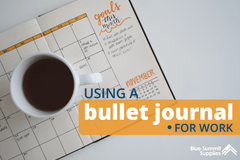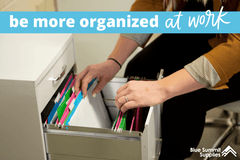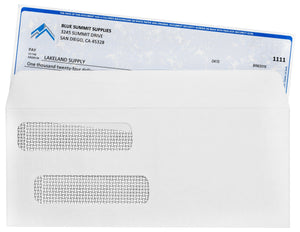Let’s talk about the importance of being prepared. While emergency preparedness isn’t the most fun of activities, it’s certainly a worthwhile and critical investment that could save your business or the lives of your employees should the worst happen. In this post, we’ll discuss some of the emergencies your business should be prepared for and what steps you can take to prepare your team for an emergency.
National Preparedness Month
National Preparedness Month is a public service campaign designed to bring awareness to potential emergencies, such as natural and man-made disasters, as well as educate people and institutions on how to prepare for and respond to these emergencies. National Preparedness Month takes place each September and concludes on September 30th with National Preparedness Day, the national day of action.
📆 This isn’t the only time of year to care about emergency preparedness, but it’s a good opportunity to review your processes and check in with your workplace on your current state of preparedness. If it’s not September, and you know you haven’t completed a recent review, prioritize this as soon as possible.
The month is sponsored by the Centers for Disease Control and Prevention (CDC), the Federal agency in charge of protecting the nation’s health and safety, as well as the Federal Emergency Management Agency (FEMA), the leading agency when it comes to responding to and recovering from national crises. These agencies have partnered with 3000 global, national, regional, and local governments, as well as other public and private health organizations.
National Preparedness Month was created in 2003 to empower US citizens to understand emergency preparedness and make their own survival preparations. The month of September was chosen to commemorate the September 11th terrorist attacks on the World Trade Center. The month of September is also during the peak of the Atlantic hurricane season.
Ready.gov is the national public service campaign that offers education on preparing for and responding to emergencies and disasters. These include natural disasters, terrorist attacks, infections disease outbreaks, chemical or radiological diseases, and more. The Ready campaign has resources for homes, schools, communities, and workplaces. The campaign aims to promote preparedness through public involvement at all levels.
Learn more on the National Preparedness Month Website.
Why Your Workplace Must Be Prepared for an Emergency
\Businesses can be impacted by a range of disasters, hazards, and emergencies. Natural disasters most often come to mind, including hurricanes, tornadoes, earthquakes, droughts, wildfires, and severe winter weather. But businesses are also impacted by human-caused hazards, such as acts of violence or accidents, health hazards, like the flu and other serious illnesses, and technology-related hazards, like power outages and equipment failure.
Hazards and disasters like these are not only costly—they can permanently close many businesses. For example, 40% of businesses won’t reopen after a natural disaster, 25% of small businesses will close one year later, and 75% of businesses without a continuity plan will fail three years later.
Some hazards and disasters are riskier to businesses in different states.
Hurricanes are the costliest natural disaster because of the damage they cause due to strong winds, heavy rain, and flooding. Hurricanes are more likely to be a risk to businesses in areas affected by hurricanes, such as the southeast and mid-Atlantic coast of the US.
Earthquakes are more common on the Pacific coast of the US and in Southeast Alaska. Tornadoes are more common in parts of the midwest and southeast. Power grid failure is more costly in certain states, including California, Texas, Florida, Illinois, and New York.
Even when businesses do recover from a disaster, they may still suffer from operational and financial impacts. Businesses may have to close their doors and operations for days or weeks at a time, resulting in the loss or delay of sales and income. They may lose customers or customer satisfaction due to delays and cancellations. Expenses can increase due to overtime labor, outsourcing, and expediting costs. There may also be regulatory fines and penalties due to breaches in contracts.
Compared to the costs a business may face as the result of a disaster, preparing for a disaster is relatively inexpensive. Here are several no-cost and low-cost ways to prepare for disasters and hazards in the workplace.
No-Cost Disaster Preparedness Actions
- Review your insurance coverage.
- Consider the types of disasters and hazards that are most likely to affect your business.
- Create an emergency contact list for employees.
- Create disaster procedures, such as evacuation and shelter-in-place.
- Develop your emergency procedures and business continuity plan.
- Share your disaster procedures with employees through training, emails, and company policy.
- Talk to utility service providers about your backup options should a disaster occur.
- Move electric equipment and inventory off the floor in case of flooding.
Low-Cost Disaster Preparedness Actions
- Buy a smoke alarm and fire extinguisher.
- Back up your data and records and save them to an offsite location.
- Provide employees CPR and first aid training.
- Buy or update anti-virus software.
- Check on electrical equipment and replace unsafe equipment.
- Attach heavy furniture and cabinets to walls and move heavy or breakable items to low shelves.
Investment Disaster Preparedness Actions
- Buy additional insurance for hazards that your business is more likely to experience.
- Buy a backup generator that will keep your business operational during a power failure.
- Hire a professional to evaluate your building to ensure you’re up-to-date on meeting codes.
- Hire a professional to develop your emergency procedures and a business continuity plan.
- Purchase a sprinkler system and fire doors.
- Send key emergency response employees to training and conferences.
Planning for Emergency Preparedness and Response in the Workplace
Emergency preparedness and response in the workplace does not have to be complicated or expensive. There are simple steps you can take to make sure you are ready for whatever hazards or disasters might affect your business.

1. Establish a Workplace Emergency Action Plan
Having an emergency preparedness plan for the workplace is critical to preventing property damage, injury, and even loss of life. However, 62% of businesses do not have an emergency plan in place.
A workplace emergency action plan helps businesses protect employees, visitors, contractors, and anyone in the workplace through organized procedures like evacuation, shelter-in-place, and lockdown. They can also help contain and stabilize hazards, assess the damage, and salvage property following an incident.
Developing an emergency plan should begin with assessing the risks of different hazards to your workplace based on your location. Personnel should be assigned to both develop the plan and implement it during an emergency.
💡 Your workplace can order free preparedness materials from FEMA.

2. Make Emergency Response Kits for the Workplace
A disaster, hazard, or emergency may disconnect your workplace from normal sources of food, water, and first aid. Having a fully-stocked emergency response kit for the workplace will provide you with the resources your team needs to survive for several days.
A basic disaster and emergency supply kit should be stored in one or two easy to transport containers, like plastic bins or a duffel bag. All the components should be stored in airtight plastic bags.
An emergency response kit should include at least one gallon of water per person per day for at least 24 hours, but preferably more. This water will be used for both drinking and sanitation. It should include a supply of non-perishable food for the same amount of time. Don’t forget a can opener for those non-perishable canned goods!
The kit should also include basic equipment, such as a flashlight, first aid kit, extra batteries, and a battery-powered or hand crank radio for listening to emergency information. Other useful equipment includes a whistle to signal for help, maps of the local area, tools like wrenches and pliers, masks for filtering dust, and other sanitation supplies, like moist towelettes, garbage bags, and plastic ties.
While these are the basics of an emergency response kit, the list doesn’t stop there. A fully-stocked kit can include many more items, such as sanitary items like soap, hand sanitizer, and surface wipes, emergency blankets, matches in a waterproof container, and medicines like pain relievers, anti-diarrhea medication, antacids, or laxatives. You may even consider including prescription medicines that your employees take, as they may not have access to a pharmacy in the event of an emergency.
Ready.gov has guidance for building, storing, and maintaining your kit. You can also purchase premade kits for your workplace.

3. Keep Your Team Informed and Invest in Training
All the planning in the world won’t matter in an emergency if your team isn’t aware of your plan. Workplace emergency preparedness also includes investing in training to keep all hires informed about your emergency procedures.
Emergency plans and procedures should be accessible to all employees. This means they should be available on your workplace intranet or wherever you store your office procedures. Publicly display critical disaster information in common areas like kitchens and break rooms. Everyone in the workplace should review the plan on a regular basis as well as practice the procedures, including fire drills and lockdown drills.
Don’t forget about your new hires. Take the time to train new employees on your preparedness procedures as part of their onboarding process.
Keep Your Workplace Safe
💡 What is EAP Counseling? The Benefits of EAPs and FAQs Answered
💡 Psychological Safety in the Workplace: What It Is and How to Achieve It
We’re passionate about helping teams stay safe in any work environment. Follow our office blog for the latest trends, safety strategies, product comparisons, wellness advice, and more.
If you have any questions or want to talk to someone about office supplies, leave a comment below or connect with us on Twitter, Facebook, or Instagram.












